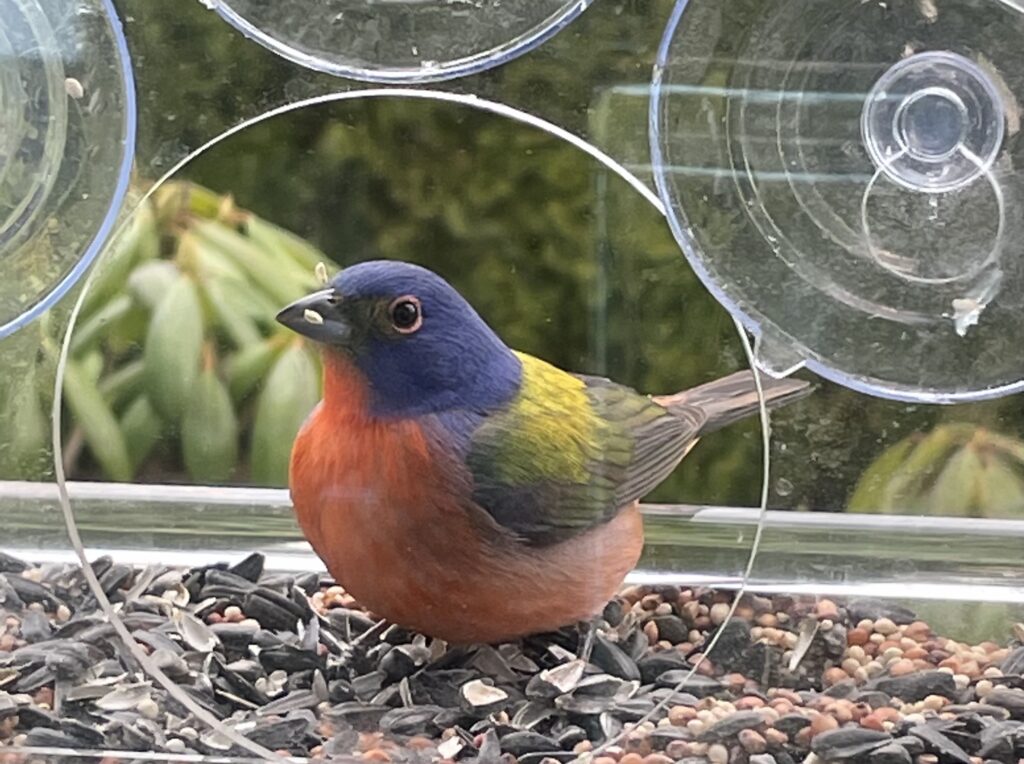The Painted Bunting is a stunning bird that belongs to the cardinal family. It is a small, brightly colored bird that measures around 5.5 inches in length and weighs about 0.8 ounces. The male has a distinctive plumage, with a bright blue head, a green back, and a red breast, while the female is more subdued with an olive-green back, yellow-green breast, and a gray head. Their wingspan measures approximately 7.5 inches.

The Painted Bunting is known for its striking plumage, which makes it one of the most colorful birds in North America. The male’s bright blue head and red breast are unmistakable, and the green back contrasts vividly with the red and blue. The female’s coloring is more subtle, but she still stands out with her yellow-green breast and olive-green back. Both sexes have a conical bill and black eyes.
The Painted Bunting is a migratory bird, spending its winters in southern Mexico and Central America, and its summers in the southern United States. They typically arrive in the southern United States in late April or early May, and their breeding season lasts until mid-September. During the breeding season, they can be found in dense shrubs and thickets in fields, forests, and brushy areas.
During migration, the Painted Bunting travels long distances, covering up to 1,500 miles from its wintering grounds to its breeding grounds. They migrate at night, using the stars to navigate. They are solitary birds and do not form flocks during migration.

In conclusion, the Painted Bunting is a stunning and colorful bird that can be easily identified by its bright blue head, green back, and red breast in the male, and olive-green back, yellow-green breast, and gray head in the female. They are small, weighing around 0.8 ounces and measuring about 5.5 inches in length, with a wingspan of approximately 7.5 inches. They are migratory birds, spending winters in southern Mexico and Central America and summers in the southern United States. During migration, they cover long distances, and they can be found in dense shrubs and thickets during the breeding season.


